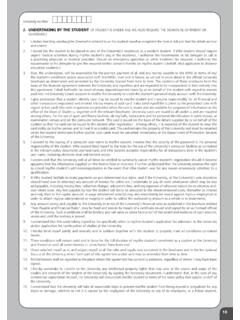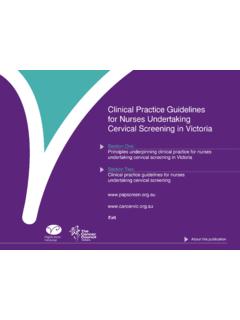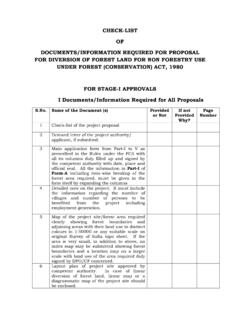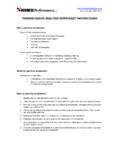Transcription of June 2009 - World Bank
1 THE PETROLEUM SECTOR VALUE CHAIN WORKING DRAFT NOT FOR CITATION. The Oil, Gas and Mining Policy Division of the World Bank is undertaking a Study on NOCs and Value Creation, and this draft version of Chapter 1 of the Study has been published to inform the public on progress and invite dialogue. A revised version of this paper will be included in the Study which is expected to be completed by june 2010. For further information on the Study on NOCs and Value Creation please visit our website june 2009 2 Copyright 2009 The International Bank for Reconstruction and Development/The World Bank 1818 H Street, NW Washington, DC 20433 All rights reserved.
2 This paper is a working draft of Chapter 1 of the Study on National Oil Companies and Value Creation (the Study ). An updated version of this paper will be included in the Study launched in March 2008 by the Oil, Gas, and Mining Policy Division of The World Bank, and expected to be completed by june 2010. The manuscript of this paper has not been prepared in accordance with the procedures appropriate to formally edited texts. Some sources cited in this paper may be informal documents that are not readily available. The findings, interpretations, and conclusions expressed herein are those of the author(s) and do not necessarily reflect the views of the International Bank for Reconstruction and Development/The World Bank and its affiliated organizations, or those of the Executive Directors of The World Bank or the governments they represent.
3 The World Bank does not guarantee the accuracy of the data included in this work. This paper may not be cited, resold, reprinted, or redistributed for compensation of any kind without prior written permission. For inquiries, please contact: Oil, Gas, and Mining Policy Division The World Bank 2121 Pennsylvania Avenue, NW Washington DC, 20433 Telephone: 202-473-6990 Fax: 202-522 0395 Email: Web: 3 Table of Content 1 Introduction .. 5 2 The petroleum value chain .. 6 Value creation .. 7 Empirical illustration: E&P .. 9 3 Key stages of the value chain .. 11 Exploration and production .. 12 Transportation and storage .. 16 Refining and marketing.
4 17 Gas processing and marketing .. 18 Petrochemicals .. 19 4 Value creation through integration .. 20 5 Key policy choices .. 22 Industry participation .. 22 Licensing and petroleum contracts .. 23 Taxation .. 25 Depletion policy .. 26 6 Conclusion .. 28 References .. 30 4 Acknowledgments This The petroleum sector value chain is intended as a contribution to the Study on National Oil Companies and Value Creation (launched in March 2008) by the Oil, Gas, and Mining Policy Division of The World Bank. The Task Leader of the Study is Silvana Tordo (Lead Energy Economist, Oil, Gas and Mining Division of the World Bank). The paper was written by Christian O.
5 H. Wolf (Consultant), with contributions from the Task Leader. 5 THE PETROLEUM SECTOR VALUE CHAIN The weakest link in a chain is the strongest because it can break it. (Stanislaw Lec) 1. Introduction The oil and gas industry encompasses a range of different activities and processes which jointly contribute to the transformation of underlying petroleum resources into useable end-products valued by industrial and private customers. These different activities are inherently linked with each other (conceptually, contractually and/or physically), and these linkages might occur within or across individual firms, and within or across national boundaries.
6 This chapter will briefly describe the key constituent activities of the petroleum sector. It does so based on the notion of an industry value chain (or value system, as typically more than one firm is involved in the sector). It will also present some of the key policy decisions associated with the different stages of the value chain. Overall, this chapter seeks to introduce key activities, value drivers and risk factors of the petroleum industry. The focus of the Study is the creation of social value at the country-level rather than private shareholder value. Consequently we examine the industry value chain (national petroleum value system), and consider the contribution of individual firms to social value creation.
7 Although all stages of the industry value chain will be discussed, there is a deliberate emphasis on upstream operations. Section 2 describes the petroleum sector value chain and briefly discusses key drivers of value creation in the sector, illustrated by empirical data on exploration and production activities. Section 3 describes the individual stages of the value chain. Section 4 reviews the argument for horizontal concentration and vertical integration in the sector. Section 5 focuses on some key policies that influence value creation through the institutional context. Section 6 concludes. 6 2 The petroleum sector value chain For the purpose of this Study, value creation is an aggregate benefit to society, parts of which are captured by different actors.
8 The value chain analysis, as popularized by Porter (1985), investigates the sequence of consecutive activities which are required to bring a product or service from conception and procurement, through the different phases of production and distribution, to the final Such analysis can be done for individual firms, for clusters of firms whose value chains are interlinked usually involving suppliers, distributors/sellers and customers, and referred to as value systems by Porter or for selected industries (within or across national borders). In line with our focus on social value creation, we will consider the industry value chain for the petroleum sector.
9 Its principal stages are the development, production, processing, transportation and marketing of hydrocarbon, as set out in Figure 1. Figure 1: Petroleum value chain Source: Author 1 Porter distinguishes between the different stages of supply, the physical transformation from inputs to outputs, and the critical supply services of the firm such as strategic planning or technology development. Porter argues that the greatest value is frequently added by these latter services, and also by the specific combination in which the individual pieces of the chain are combined: Although value activities are the building blocks of competitive advantage, the value chain is not a collection of independent activities.
10 Value activities are related by linkages within the value chain (Porter 1985, ). Petroleum resourcesExploration & AppraisalReserves developmentPetroleum productionTransport & StorageOil refiningOilfield services & equipmentOther services and inputs:-Trading-Financing-R&D-Process processing (NG, LNG, GTL etc.)Transport & StorageTransport & StoragePetrochemicalsOil marketing & distributionGas marketing & distributionPetroleum resourcesExploration & AppraisalReserves developmentPetroleum productionTransport & StorageOil refiningOilfield services & equipmentOther services and inputs:-Trading-Financing-R&D-Process processing (NG, LNG, GTL etc.)















